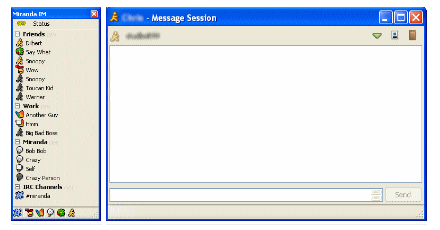When it comes to communicating, there is a potentially huge difference between what we actually say and how it comes across. Our message comes across as 7 percent verbal, 38 percent vocal, and 55 percent body language. So, we could be saying one thing here (verbal) and saying the exact opposite here (body). Making sure you’re communicating exactly what you intend is all about awareness. So today, we’re going to talk about the three elements of communication, how to be aware of them, and how to control them so that your message is always crystal clear. The first element is verbal, choosing the right words to say. You’ve had the most practice with this one. You’ve thought about how you’ll answer interview questions, you’ve researched your presentation, you’ve prepared for your next meeting. That’s always the first thing we take care of -- making sure that when we open our mouths, it’s hopefully to say the right thing. But remember, that’s only 7 percent of our message. The second element is vocal: How those words sound when you’re saying them, which is 38 percent of your message. Record yourself answering questions or delivering your presentation, and then play it back. Listen for grammar and cut out the “ums” and “likes.” Listen for speed and adjust your tempo accordingly. Listen for tone -- if you sound anxious or insecure, just keep practicing until it feels more natural to you. If you’re boring even yourself, practice injecting some energy into it by recording it all over again, but with a big old smile on your face the whole time. Now, I’m not saying you should go in and deliver it like that, I’m just saying practice it that way until you find the balance that works for you. Our third element, which comes in at a hefty 55 percent of our message, is body language: What we’re saying with posture, gesture, and expression. This is the trickiest one, because it has the power to either reinforce what you’re saying or completely negate it. So dress in what you plan to wear, sit if you’ll be sitting, stand if you’ll be standing, and practice those answers again in front of a mirror. Soon you’ll begin to recognize the body positions that are helping you and the ones that are not. The key to confidant and authoritative body language is keeping yourself unguarded and in control. To accomplish this, always keep your body open to whomever you’re speaking. Turning away, lowering your head, rolling your shoulders forward -- these are all actions that diminish you and diminish your power in the conversation. But holding your body open and straight and keeping your chin up, and maintaining eye contact -- that allows you to retain your power. Don’t take any protective positions: Don’t cross your arms over your chest or put your hands up near your face. Those gestures completely undermine your confidence and can leave a more lasting impression than what you’re actually saying. Cross your hands in your lap, holding them behind your back if you’re standing, or just cross your ankles. Fidgeting is just an outlet for your nervous energy, but it can be really distracting. So if you start bouncing your leg, tapping your pen, fixing your hair, just interlock your fingers and leave them calmly on your lap. If you go into your next interview and tell them exactly what they want to hear in a clear, assuring voice while keeping a casual, comfortable, and confidant body position, you will not only be the smoothest version of yourself, you will also be quite memorable -- and so will your message.




